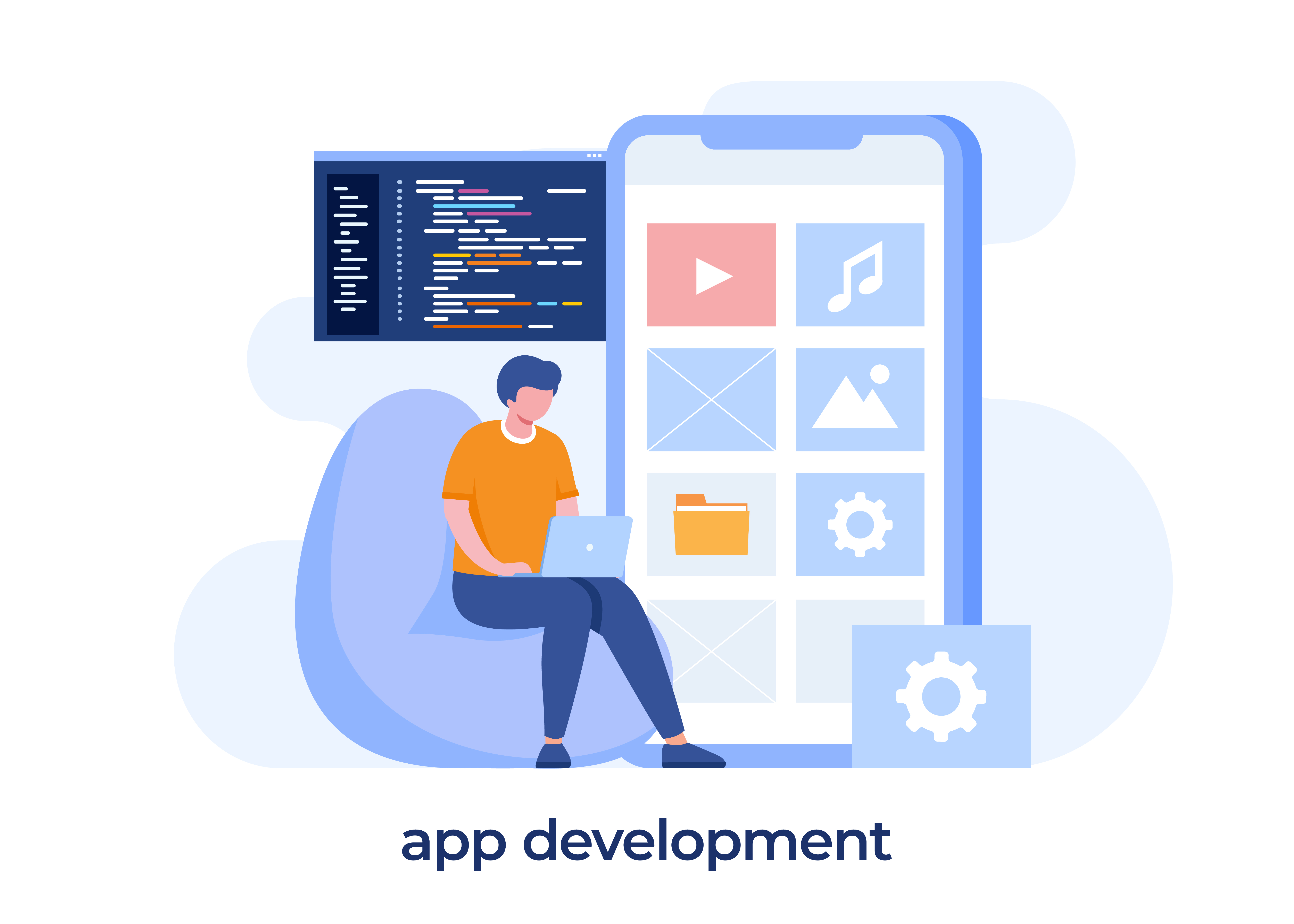The mobile app development scene in the UK is very competitive and full of life. To stay ahead, mobile application developers are always coming up with new ideas, using new technologies, and meeting changing customer needs. As we move through 2025, a clear set of trends has emerged that will shape the plans of smart development teams from London to Manchester and beyond. These trends aren’t just about cool new features; they show a deeper shift towards making digital experiences that are smarter, smoother, and more responsible.
This article looks at the top ten trends that mobile application developers are following. We will look at how new developments in AI, the rollout of 5G, and a growing focus on user privacy and sustainability are changing the next generation of mobile apps.
Get a Robust App for Your Business
1. Hyper-Personalisation with Predictive AI
Artificial intelligence is not just a thing of the future anymore; it’s a key part of making apps today. Mobile application developers are going beyond basic AI features and adding hyper-personalisation engines in 2025. These systems use machine learning and predictive analytics to figure out what users will need before they even say it.
Apps now not only suggest content based on what you’ve done in the past, but they also predict what you’ll be interested in in the future, suggest actions, and change the whole user interface in real time. For instance, if an AI thinks a user is in an area where it is likely to rain, a UK-based retail app might change its homepage to show umbrellas and waterproof jackets. Similarly, a fitness app could proactively adjust a user’s workout plan for the week based on data from their calendar, sleep patterns, and even local air quality reports. This level of customisation makes the experience very engaging and makes users feel valued and understood.
2. The Rise of Augmented Reality for Everyday Use
Augmented Reality (AR) is no longer just for games and novelty filters. Mobile application developers are now adding AR to useful, everyday apps, which will change the way people interact with the world around them. This trend is especially strong in real estate, e-commerce, and education.
For example, furniture stores are going for apps that let you virtually put a sofa or coffee table in your living room to see how it fits and looks with the other things you already have. Real Estate apps use augmented reality (AR) to give virtual tours of homes, so people who are interested in buying can look at them from anywhere. In the industrial sector, maintenance apps use AR overlays to help engineers with complicated repairs by showing them specific parts and instructions right in their field of view. These real-world uses are making AR more popular and showing how useful it can be.
3. Optimisation for 5G Connectivity
Now that the 5G network is widely available in the UK, developers are making apps that take advantage of its features. 5G’s speed and low latency open up a whole new level of mobile experiences that weren’t possible before.
It includes streaming high-quality 4K and 8K video without buffering, allowing real-time collaboration in productivity apps, and supporting competitive mobile gaming with response times that are almost instant. Developers are also using 5G to improve AR and VR experiences by making it possible to smoothly render more detailed and complex virtual objects in the cloud. By making their apps work better with 5G, mobile application developers are making sure they will work in the future and giving users the high-performance experiences they are starting to expect.
4. The Super App Ecosystem
The “super app” model, which combines many services into one interface, has been popular in Asia for a long time. This trend is really taking off in the UK in 2025. Instead of making users switch between dozens of single-purpose apps, developers are making integrated ecosystems that include everything from messaging and social media to payments, shopping, and transportation.
The UK fintech companies are leading the way in this trend by adding investment platforms, travel booking, and bill management to their digital banking apps. The goal is to make the platform the centre of a user’s digital life, which will keep them coming back and make it hard for them to leave. It means that the development strategy needs to change a lot. The focus should be on creating a strong platform that can easily work with a lot of third-party services.
5. Sustainability and Green App Design
More and more UK consumers are concerned about the environment, and this is now affecting how apps are made. The goal of “green app design” is to make apps that are easy to use and use less energy. Developers know that complicated apps can use up a lot of battery power, which means the device needs to be charged more often and leaves a bigger carbon footprint.
Mobile application developers are doing things like optimising code to use less CPU, using smart caching strategies to cut down on network requests, and making dark-mode UIs that use less power on OLED screens to fight this. Some apps go even further by adding features that encourage people to live in a way that is good for the environment, like calculators for carbon footprints or guides to local recycling centres. This emphasis on sustainability is becoming a big part of what makes the brand stand out.
6. Voice-Activated User Interfaces
Voice commands are now a common feature in smart homes and cars because they are so easy to use. They are also becoming a core feature in mobile apps. Mobile application developers are adding advanced voice-activated user interfaces (VUIs) that let you navigate and control things without using your hands.
It is more than just a voice search. People can now use natural language to do complicated, multi-step tasks. For example, a user could tell their banking app to “pay my £50 phone bill and move the rest of the money to my savings account.” Recipe apps let people who cook at home follow directions without having to touch the screen with dirty hands. Natural Language Processing (NLP) has gotten better, and people want easier, more accessible ways to use technology.
7. Advanced Biometric Security
Security is very important because mobile apps are handling more and more private and financial information. People think that standard password protection is old-fashioned and weak by 2025. Mobile application developers are adding biometric security features that work on more than one level to keep user data safe.
It includes things like fingerprint and facial recognition, which are now common, but it is also growing to include more advanced methods like voice biometrics, which can tell who a user is by the way they speak. Some high-security apps are even trying out behavioural biometrics, which look at how a person types, swipes, and holds their device to make a unique profile. These advanced steps make security strong without making it harder for users to use.
8. Cross-Platform Development with a Native Feel
The argument over whether to use native or cross-platform development is changing. Native apps work the best, but making and keeping separate codebases for iOS and Android is time-consuming and expensive. In response, mobile application developers are using advanced cross-platform frameworks like Flutter and React Native, which can now provide a user experience that is almost like that of a native app.
These frameworks let developers write code once and use it on many different platforms. This saves a lot of time and money on development. Modern tools let you customise a lot, so the final app will meet the specific design guidelines and user expectations for both iOS and Android. This practical approach helps both new and old businesses reach more people more quickly.
9. Wearable Technology Integration
The market for wearable tech, like smartwatches and fitness trackers, is still growing. Smart mobile application developers are no longer putting wearables on the back burner; instead, they are making them the main point of their apps. They are making special companion apps and advanced notification systems that let users use their mobile app on their wrist.
For example, a travel app could show a QR code for a boarding pass on a smartwatch so that it is easy to scan. A health app can show you your heart rate in real time and give you feedback during a workout right on your wearable device. This trend is all about giving users easy-to-read information and controls that let them take action quickly without having to take their phones out.
10. Data Privacy by Design
Data privacy is no longer just a checkbox exercise; it’s now a core design principle because of years of high-profile data breaches and more people becoming aware of the issue. Mobile application developers are following strict GDPR rules and taking a “privacy by design” approach. Privacy concerns are now taken into account from the start of the development process.
It means collecting as little data as possible to make the app work, giving users clear and detailed control over their data, and using strong encryption for all data, whether it is being sent or stored. Apps are now made to be clear about what data they collect and why they do it. This focus on ethical data handling isn’t just about following the rules; it’s also about gaining users’ trust, which is key to long-term success.
How These Trends Are Reshaping the Role of Mobile Application Developers
In 2025, the world of mobile app development is very different, and developers have to do more than ever before. Mobile application developers are no longer just coders; they are now strategists, innovators, and people who work with people from different fields. Developers need to keep learning new skills to keep up with the latest technologies and frameworks, like AI-driven personalisation, AR integration, 5G optimisation, and super app ecosystems.
To fully embrace hyper-personalisation powered by AI, you need to know a lot about machine learning models, how to analyse user data, and how to make ethical decisions. The widespread use of AR and VR has led developers to combine software engineering with design thinking and spatial computing. As 5G becomes more popular, developers are working to improve app performance and look into ways to use ultra-fast connections, such as cloud-based gaming and smooth video streaming.
Final Words
The mobile app market in the UK is a good example of how quickly technology changes and how people’s needs change. The trends for 2025 show that apps are becoming smarter, faster, more integrated, and more responsible. From the predictive power of AI to the immersive potential of AR and the ethical necessity of privacy-first design, mobile application developers are not just following trends; they are setting them.
They are making the next generation of mobile experiences that will shape how we interact with technology for years to come by using these new technologies. As a result, the best mobile application developers are those who know a lot about technology and also know a lot about user experience, ethics, and the market. They are proactive learners, good at quickly making prototypes, and they work together to solve problems. These are all important skills in a fast-paced and changing digital economy.
Are you looking for a mobile application development company in UK? Just contact us for a perfect solution for your business.






